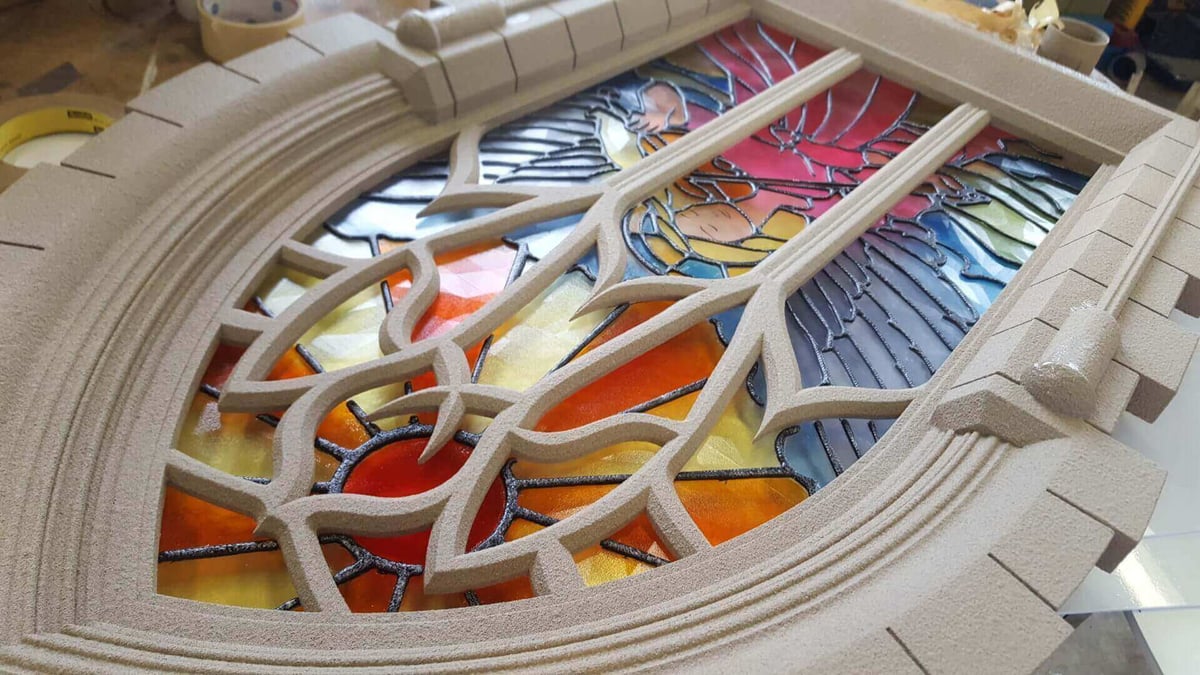When is a stained glass window not a stained glass window? When it’s 3D printed and hand finished to look even better than the real thing.
Custom Prototypes are a rapid prototyping and 3D printing service company based in Toronto. You may have heard of their shenanigans with the paintings of Vincent Van Gogh, where they scanned and 3D printed replicas of his work (and won prizes in the process).
For their next trick, the company has been diligently working on a three-month project. It’s a beautiful stained glass window that doesn’t actually feature any glass. Instead, the plastic panes were 3D printed on an industrial SLA machine and then dyed by hand.
But their achievements don’t stop there, however. The stone frame holding the glass in place isn’t made of stone either. It’s also 3D printed, and then spray-painted to resemble an ornately sculpted piece of masonry.
See how it was made in the video below (with profuse apologies for the annoying soundtrack):
Stained Glass Window 3D Printed with Stereolithography
So how is a 3D printed stain glass window possible, in any case? Custom Prototypes conceived of the idea as a way to showcase their ability to print in both solid and clear plastic using resins from Somos.
In the first stage, the entire window is designed using CAD (computer aided design) software called Solidworks. Once the model is complete, the window is then printed in four separate pieces.
The most difficult challenge, according to the company, is to create the appearance of coloured glass while still maintaining transparency. Testing on scrap materials was required to achieve the desired look.
But because painted panes looked too opaque, the team switched over to using color dye instead. This requires careful application with a steady hand to avoid bleeding and mixing of colours. With a generous amount of gloss clear coat afterwards, the desired look of stained glass is finally achieved.
The next step is to add on rustic lead lines. This is done with a metallic spray undercoat and a black top coat which is then textured with steel wool. The frame is then clamped, glued and sanded, with gaps filled using body filler. The stone texture of the frame is done using aerosol paints and finished with a sandstone top coating.
Overall, the final result is nothing short of… miraculous. What do you think of the stained glass window? Let us know in the comments.
Source: Custom Prototypes

License: The text of "Stunning Stained Glass Window is 3D Printed from Plastic" by All3DP is licensed under a Creative Commons Attribution 4.0 International License.